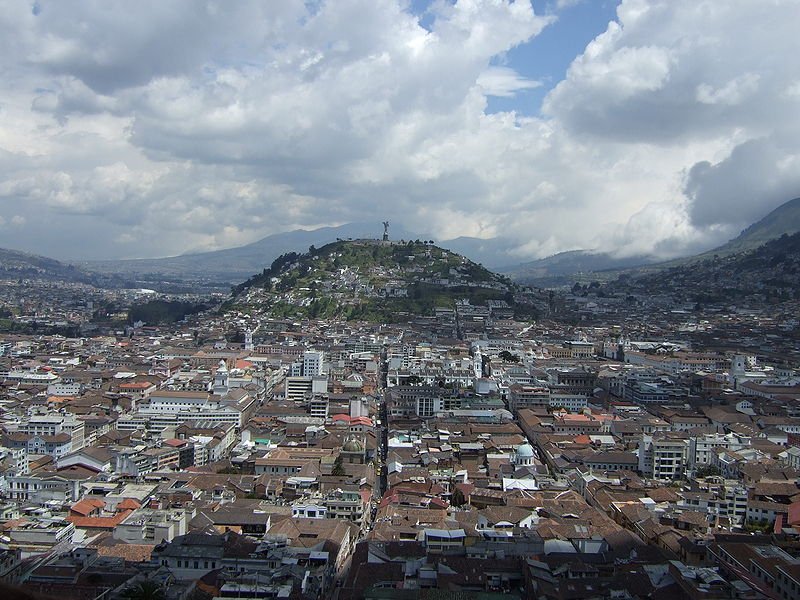 Statue of La Virgen del Panecillo with Quito spread out below it
Statue of La Virgen del Panecillo with Quito spread out below itSource: https://commons.wikimedia.org/wiki/File:Virgen_de_Quito.jpg
Author: Lion Hirth

Quito is the capital and second largest city in Ecuador. Its official name is San Francisco de Quito. The city covers 324 sq km (125 sq mi) and has a population of 1.4 million people, within a metropolitan area of 1.8 million people. Located at an elevation of 2,850 m (9,350 ft) above sea level, Quito is the second highest capital in the world after La Paz.
Quito is five hours behind Coordinated Universal Time (UTC-5). The phone area code is (02). The city is located just a kilometer south of the equator, with the heart of the city some 25 km to the south of it. At the equator itself is a monument and museum.
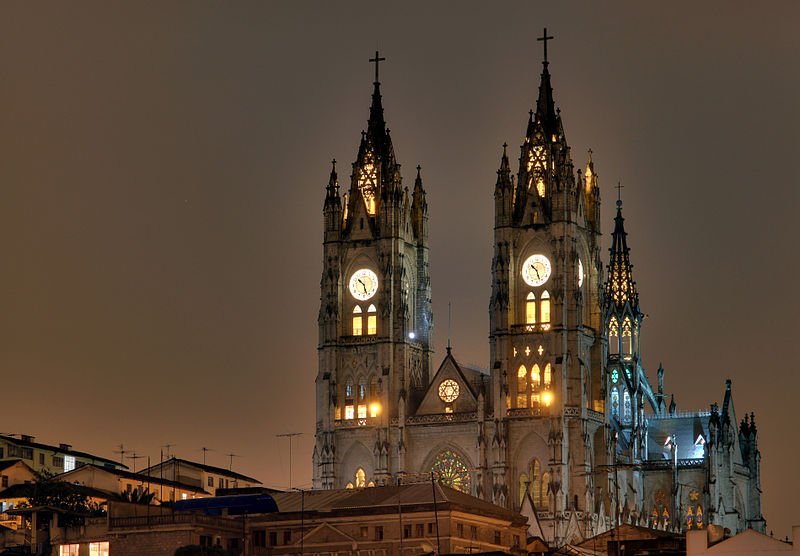 Basilica del Voto Nacional, Quito
Basilica del Voto Nacional, QuitoSource: https://commons.wikimedia.org/wiki/File:49_-_Quito_-_D%C3%A9cembre_2008.jpg
Author: Martin St-Amant

Quito is located on a long plateau in the Guayllabamba river basin, on the northern part of Ecuador. On either sides are soaring volcanoes which are visible from Quito on clear days. The closest among them is Pichincha, an active volcano standing at 4,700 meters above sea level. Pichincha has been erupting once in a while, the last on 23 August, 2006, forcing the closure of the airport.
Quito experiences a subtropical highland climate. Its location close to the equator gives it a fairly uniform temperature that can be described as year-round spring. The average high daily temperature is around 19.4°C (67°F) while the average low daily temperature is 8.9°C (48°F).
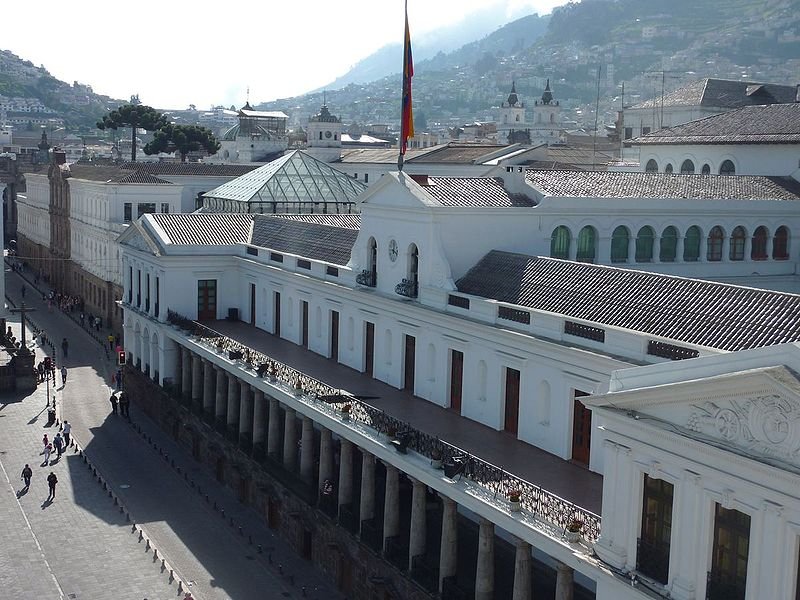 Palacio Carondelet, Quito
Palacio Carondelet, QuitoSource: https://commons.wikimedia.org/wiki/File:Quito-Palacio_Carondelet-02.jpg
Author: Neverhood

The administrative division of Quito is called parish. There are 32 urban parishes to the municipality of Quito. They are grouped into larger divisions called municipal zones.
The history of Quito goes back to pre-Columbian times, when the area was inhabited by the Quitu tribe. They were conquered by the Caras tribe, who then founded the Kingdom of Quito in around AD 980. Then Caras were in turn conquered by the Incas in 1462. Then in 1534, the area was conquered by the Spanish.
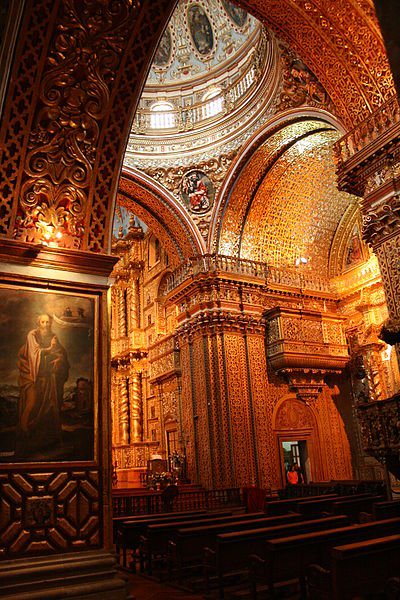 Iglesia de la Campañia, Quito
Iglesia de la Campañia, QuitoSource: https://commons.wikimedia.org/wiki/File:LA_COMPA%C3%91IA.JPG
Author: Dr. Carlos Costales Terán

The city of Santiago de Quito was founded by Diego de Almagro on 15 August, 1534. Less than two weeks later, on 28 August, it was renamed San Francisco de Quito. The original location of Quito was near Riobamba, 200 km to the south of present-day Quito. It was relocated to the present site four months later, on 6 December, 1534, by a group of settlers headed by Sebastián de Banalcázar.
A political movement for independence began in Quito in 1809. Although it was crushed, it gave rise to nationalist sentiments in Latin America, culminating with the Battle of Pichincha which led to the independence of Quito from Spain. Following independence in 1822, Quito became part of the Republic of Gran Colombia until 1830, when the dissolution of Gran Colombia paved the way for the establishment of the Republic of Ecuador, with Quito as its capital.
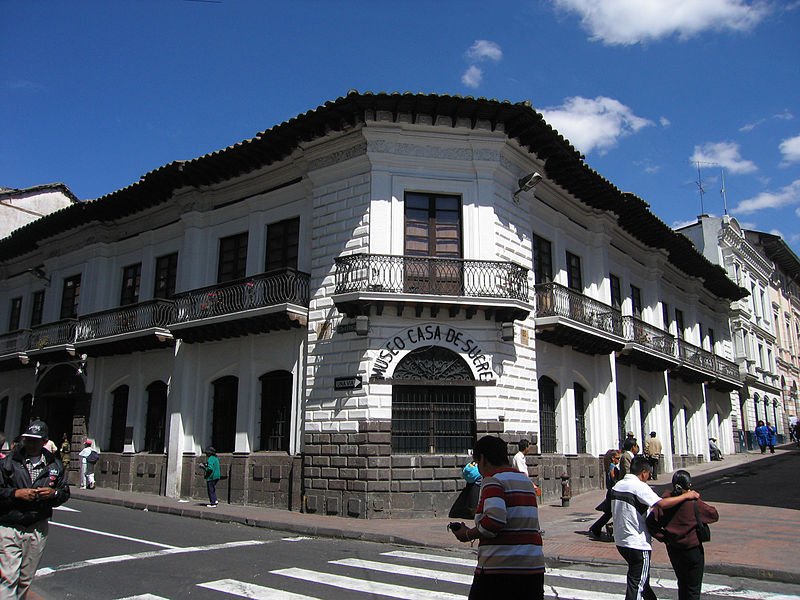 Museo Casa de Sucre, Quito
Museo Casa de Sucre, QuitoSource: https://commons.wikimedia.org/wiki/File:Museo_Casa_de_Scure_in_Quito_Ecuador.JPG
Author: Yosemite

UNESCO Inscription
The historic centre of Quito was recognized as a World Heritage Site in 1978, making it the first city in the world to receive such an honour. To learn more about this, read Quito World Heritage Site.Visiting Quito, Ecuador
Most international visitors arrive at the Aeropuerto Internacional Mariscal Sucre (UIO), located 8 km from downtown Quito. From the airport, you can take the taxi or the bus to Mariscal. Mariscal is the tourist district of Quito. The taxi fare to Mariscal is around US$5. To take a taxi, buy a taxi ticket from the counter located in the Baggage Claim area. The other option is to take the bus, but unless you are traveling light, it would not be a good idea. The bus fare is however quite attractive, just US$0.25.Places of Interest in Quito, Ecuador
- Calle de la Ronda
- Casa de la Cultura
- Centro Cultural Itchimba
- Conjunto monumental San Francisco
- Intiñan Solar Museum
- Jardin Botanico
- La Virgen del Panecillo
- Mitad del Mundo
- Museo de la Ciudad
- Museo del Banco Central
- Museo Guayasamin
- Museo Mindalae
- Teleferico
 Latest updates on Penang Travel Tips
Latest updates on Penang Travel Tips

Copyright © 2003-2025 Timothy Tye. All Rights Reserved.

 Go Back
Go Back